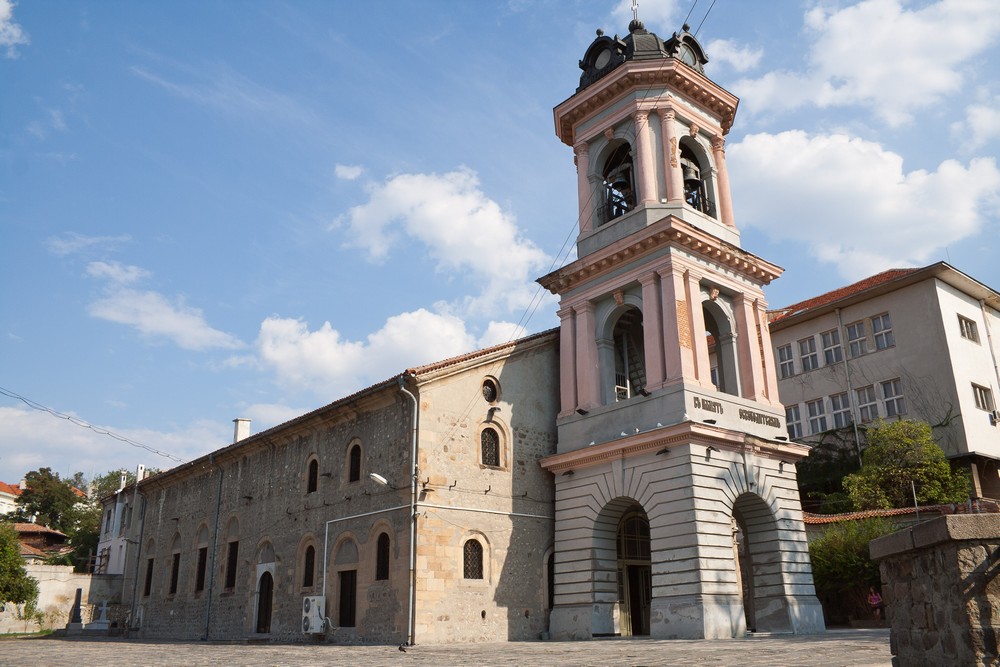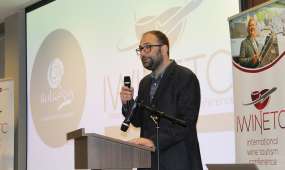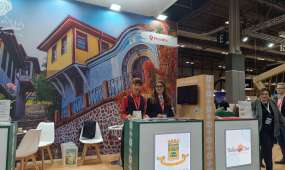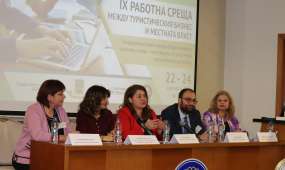The Holy Assumption Cathedral (Uspenie Bogorodichno church)
phone: +359 879 963 737 link: http://www.plovdivskamitropolia.bg/The Holy Assumption Cathedral Church
The first records date back to IX – X century. The church was dedicated to the Mother of God, Virgin Mary early on. During the Ottoman invasion in Bulgarian lands and after the conquest of the city in 1371, the monastery near the church was demolished and completely destroyed.
During the Renaissance, there was no trace of the ancient and majestic church. For the period from 1844 to 1845, craftsmen from Bratsigovo constructed a large new church, built entirely of stone. It was a three-nave pseudo-basilica with impressive dimensions. Initially, its donor was Valko Chalakov (The Big) of Koprivshtitza, who settled in Plovdiv in early XIX century. According to Konstantin Moravenov, he was its churchwarden from 1825 until 1841, the year he died. His brother, Stoyan Chalakov, replaced him. The new beautiful church was built during his time.
During the religious and national fights for independence, the St. Mary church played a crucial role. On December 25, 1859, Christmas day, Plovdiv Metropolitan Paisiy together with priest Zlatan, chairman of the temple, held a solemn Holy Mass in Bulgarian language for the first time. After the service, the Bishop officially announced that his congregation denies the Patriarch of Constantinople. After the Russo-Turkish War and the Liberation of Bulgaria from Ottoman rule, a bell tower was built adjacent to the church in 1881, designed by the Czech architect and engineer Josef Schnitter.
The church itself is 32 meters to 17 meters. It represents a basilica in which the middle part (nave) is divided into three naves by two rows of six columns, ending with lavish baroque capitals, connected to each other by arches. The iconostasis was made by the Debar woodcarvers Andon Stanishev and Dimitar Stanishev in the Empire style, i.e. with little but large carved elements that were lined on the base. The icons on the iconostasis were made by Nikola Odrinchanin. Under the king’s icons in medallions were painted sacred images and biblical events. Stanislav Dospevski is the creator of the royal icon of Saint Mary with the Divine Infant by the iconostasis, which he painted in 1875.
The bishop’s throne is the work of the carver from Plovdiv, Ivan Manov. The Plovdiv carver Stoyan Petrov Kyustebekov made two identical arks for the temple carved in the style of the iconostasis in 1967. In 1952-1953 at the initiative and with the blessing of the Plovdiv Metropolitan Cyril, who later became Bulgarian Patriarch, the St. Mary church was painted by the professors Nikola Kozhuharov, Dimitar Gyudzhenov and Vasil Zahariev. The ornaments were not made from a template but individually. Guilloches, vines, Paleochristian symbols and others were mainly used. In this respect, the church is characterized by exceptional grace.
In honor of the 2000th anniversary of the Nativity of Christ the church was fully restored and rebuilt.
Originally the yard of the temple was smaller than it is now, but in 1930 it was considerably enlarged and shaped like a large terrace. The north yard is enclosed by a metal lattice fence and to the south – by a high stone wall, built in 1873, which reaches up to 10m height and on the southwest ends with arch-like curve. Below this curve there is an old oak two-winged door, named St. Nikolay’ gate, as it leads to St. Nikolay chapel.












Add new comment